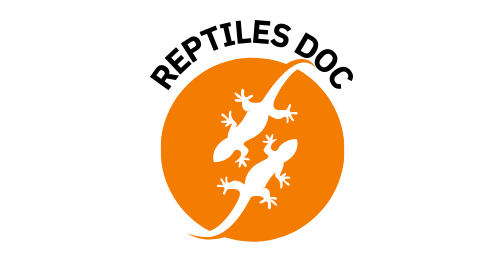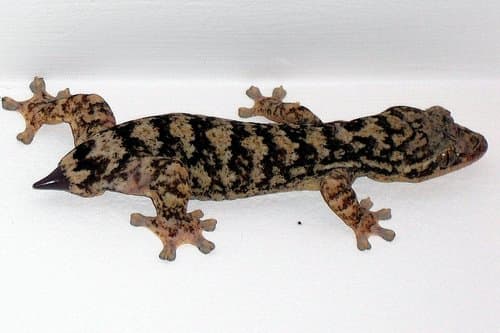Leopard geckos are remarkable creatures, known not only for their vibrant colors but also for their unique ability to shed and regenerate their tails. Leopard gecko tail regrowth occurs after a gecko drops its tail as a defense mechanism, allowing it to escape predators. The regeneration process is fascinating; while the new tail can grow back,
it differs in texture and appearance from the original. Understanding how this process works and what to expect is essential for any leopard gecko owner, as it impacts their pet’s health and well-being.
What is Tail Regrowth

Tail regrowth in reptiles, particularly in species like geckos and lizards, refers to the biological process by which these animals regenerate their tails after losing them through a mechanism known as autotomy. This process allows reptiles to replace their tails, which serve important functions such as balance, fat storage, and sometimes communication.
Biological Process Involved in Regrowing a Tail
- Wound Healing:
- After a reptile drops its tail, the first step in regrowth is healing the wound. Blood vessels constrict to minimize blood loss, and the body forms a protective scab over the area to prevent infection.
- Cell Proliferation:
- The cells around the wound site begin to multiply rapidly. This includes skin cells, connective tissue cells, and muscle cells, which help close the wound and prepare for regeneration.
- Formation of a Regenerative Blastema:
- A structure known as a blastema forms at the wound site. This cluster of undifferentiated cells is crucial for regeneration, as it can develop into various cell types necessary for the new tail.
- Cartilage Development:
- Unlike the original tail, which has vertebrae, the regenerated tail typically consists of a cartilaginous rod. The blastema cells differentiate into chondrocytes (cartilage cells), forming this new structure as the tail grows.
- Nerve Regeneration:
- Nerve tissues also regenerate during this process. While the new tail may not have the same sensory capabilities as the original, nerves start to grow back to re-establish some level of function.
- Skin and Scale Formation:
- As the tail continues to grow, skin and scales develop over the new tail, providing protection and insulation. The new skin may have different coloration and texture compared to the original tail.
- Growth Factors and Hormones:
- Various growth factors and hormones play a role in regulating the regeneration process. These biochemical signals help orchestrate cell division, differentiation, and tissue remodeling.
- Final Stages:
- Over time, the regenerated tail increases in length and matures. However, it may not achieve the same structure or functionality as the original tail and may remain shorter, smoother, or different in color.
Tail regrowth in reptiles is a complex biological process that involves wound healing, cell proliferation, and differentiation, leading to the regeneration of a new tail that, while functional, may differ from the original.
The Regeneration Process
Stages of Tail Regrowth
- Initial Healing After Tail Drop:
- Wound Closure: Immediately after the tail drops, the gecko’s body initiates the healing process. Blood vessels constrict to minimize blood loss, and a protective scab forms at the wound site.
- Cellular Response: Skin cells and connective tissue begin to proliferate around the wound, working to close it and prevent infection. This initial healing phase typically takes a few days to a week.
- Formation of the Regenerative Blastema:
- After the wound has begun to heal, a structure called a blastema forms at the base of the tail. This mass of undifferentiated cells is crucial for the regeneration process, as it has the potential to develop into various types of tissues needed for the new tail.
- Cartilage and Nerve Development:
- As the blastema cells begin to differentiate, they form cartilage instead of bone, creating a cartilaginous rod that serves as the structure of the new tail. Simultaneously, nerve tissues regenerate to provide some sensory function, although the new tail may not be as sensitive as the original.
- Skin and Scale Formation:
- New skin and scales start to develop over the growing tail. This protective layer helps shield the underlying tissues and provides insulation. The texture and color may differ from the original tail.
- Maturation of the New Tail:
- Over time, the new tail continues to grow and mature. While it may eventually reach a similar length, the regenerated tail will likely have differences in structure, texture, and color compared to the original.
Timeframe for Regrowth
- Typical Duration for a Leopard Gecko to Regrow Its Tail:
- The regrowth process for a leopard gecko can take anywhere from 4 to 12 weeks. Factors such as the gecko’s age, health, and environmental conditions can influence this duration.
- Factors Influencing Regrowth Speed:
- Age: Younger geckos typically regenerate tails more quickly and effectively than older individuals.
- Health Status: A gecko’s overall health and nutritional status can significantly impact regeneration speed. A well-fed, healthy gecko is more likely to regrow its tail faster.
- Environmental Conditions: Factors such as temperature, humidity, and stress levels in the gecko’s habitat can also affect the rate of tail regeneration. Optimal conditions can promote faster healing and growth.
- Injury Severity: The extent of the injury and any complications, such as infection or stress from environmental factors, can slow the regrowth process.
The regeneration process of a leopard gecko’s tail involves several stages, beginning with initial healing and leading to the formation of a new tail over a period of weeks. Various factors can influence the speed of this regeneration, emphasizing the importance of providing a supportive environment for recovery.
Differences Between Original and Regrown Tails
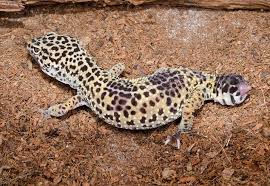
- Structure:
- Original Tail: The original tail is composed of vertebrae, which provide structure and rigidity. It is built to support balance and movement.
- Regrown Tail: The regenerated tail is primarily made of cartilage instead of bone. This makes it less rigid and more flexible, which can affect the gecko’s balance and mobility.
- Appearance:
- Original Tail: The original tail typically has a distinct coloration and pattern that is characteristic of the specific gecko species. It may also have a more textured surface with scales.
- Regrown Tail: The regrown tail may appear smoother and may differ in color and texture. The pigmentation might be less vibrant, and the new scales may not match the original in appearance.
- Length and Shape:
- Original Tail: The original tail usually has a more consistent shape and length that matches the gecko’s body proportions.
- Regrown Tail: The regenerated tail may be shorter and have a different shape, often appearing more tapered compared to the original. It might take time to reach a similar length after regeneration.
- Functionality:
- Original Tail: The original tail serves multiple functions, including balance, fat storage, and communication. It is also more effective in assisting the gecko during climbing and maneuvering.
- Regrown Tail: While the regrown tail can perform some of the same functions, it may not be as effective in balance or storing fat. The lack of vertebrae means it has less structural integrity.
- Nerve Function:
- Original Tail: The original tail has well-developed nerve pathways, providing good sensory feedback for the gecko’s movements and environment.
- Regrown Tail: The nerve regeneration in the new tail may not completely restore the same level of sensory function, leading to a reduced ability to sense vibrations or movements.
- Healing and Regeneration:
- Original Tail: The original tail has a complex structure that takes time to develop fully during the gecko’s growth stages.
- Regrown Tail: The process of regrowth involves simpler structures, leading to differences in how quickly the tail develops and matures. Regenerated tails often show signs of immaturity compared to original tails.
Leopard geckos can regenerate their tails after dropping them, the new tails differ significantly from the originals in terms of structure, appearance, functionality, and nerve function. These differences can impact the gecko’s overall well-being and behavior after tail loss.
Health Considerations During Regrowth
- Infection Risk:
- Wound Care: After a gecko loses its tail, the open wound is vulnerable to infection. Keeping the wound clean and monitoring for signs of infection (redness, swelling, or discharge) is crucial. If infection occurs, it may require veterinary intervention.
- Nutritional Support:
- Balanced Diet: Providing a nutritious diet rich in vitamins and minerals is essential for supporting the regrowth process. Calcium and vitamin D3 are particularly important for healthy tissue regeneration and bone development.
- Hydration: Ensuring the gecko has access to fresh water is vital, as proper hydration supports overall health and recovery.
- Stress Management:
- Minimize Stressors: Tail loss can be a significant source of stress for a gecko. Creating a calm and secure environment with plenty of hiding spots can help reduce stress and aid in recovery.
- Avoid Handling: Limiting handling during the healing and regrowth period allows the gecko to recover without additional stress.
- Monitoring Behavior:
- Activity Levels: Pay attention to the gecko’s behavior and activity levels. A decrease in activity or changes in feeding behavior may indicate discomfort or health issues.
- Signs of Distress: Watch for signs of distress, such as excessive hiding, lethargy, or changes in appetite. Addressing these issues promptly can help prevent further complications.
- Environmental Conditions:
- Temperature and Humidity: Maintaining optimal temperature and humidity levels in the enclosure is essential for recovery. Proper thermal gradients allow the gecko to regulate its body temperature, which is critical for metabolic processes.
- Clean Habitat: Regularly cleaning the enclosure helps prevent bacterial growth and reduces the risk of infection.
- Veterinary Care:
- Regular Check-Ups: Routine veterinary check-ups can help monitor the gecko’s recovery and ensure that there are no underlying health issues affecting the regrowth process.
- Consultation for Complications: If any complications arise, such as prolonged healing or signs of infection, consulting an exotic veterinarian experienced with reptiles is crucial for appropriate treatment.
- Tail Regrowth Timeline:
- Patience and Monitoring: Understand that tail regrowth takes time, and the gecko’s health during this period is paramount. Regularly assess the wound site and overall health, adjusting care as needed.
Monitoring and providing appropriate care during the tail regrowth process is essential for a leopard gecko’s recovery. By addressing potential health risks and creating a supportive environment, owners can help their geckos successfully regenerate their tails and maintain overall well-being.
Caring for Your Gecko During Tail Regrowth
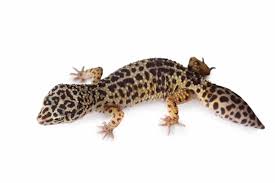
- Provide a Clean Environment:
- Regular Cleaning: Maintain a clean enclosure to prevent bacteria and mold growth, which can lead to infections. Remove uneaten food, waste, and any soiled substrate regularly.
- Disinfect: Use reptile-safe disinfectants to clean the habitat. Ensure that the enclosure is thoroughly rinsed and dried before placing the gecko back inside.
- Optimize Habitat Conditions:
- Temperature: Maintain appropriate temperature gradients (a warm side of around 88-92°F and a cooler side of 75-80°F) to facilitate metabolism and healing. Use thermometers to monitor temperatures accurately.
- Humidity: Keep humidity levels between 30-40% to ensure proper hydration and skin health. A small water dish and regular misting can help maintain humidity without causing excessive dampness.
- Monitor the Wound:
- Visual Checks: Regularly inspect the wound site for signs of healing or infection, such as redness, swelling, or discharge. Healthy healing may present as scabbing and gradual closing of the wound.
- Avoid Handling: Minimize handling to reduce stress and allow the gecko to focus on healing. If you need to handle it for cleaning or care, do so gently and briefly.
- Provide a Balanced Diet:
- Nutritious Food: Offer a varied diet that includes gut-loaded insects (like crickets and mealworms) and occasional fruits or vegetables. This ensures your gecko gets essential vitamins and minerals.
- Supplements: Dust food with calcium and vitamin D3 supplements to support bone health and aid in the regeneration process.
- Enhance Comfort:
- Hiding Spots: Include hiding spots and shelters in the enclosure to help the gecko feel secure and reduce stress. Items like caves, foliage, and other decorations can create a safe environment.
- Avoid Bright Lights: Keep bright lights to a minimum, as excessive brightness can cause additional stress during recovery.
- Stay Hydrated:
- Fresh Water: Ensure that fresh, clean water is always available. Hydration is vital for healing and maintaining overall health during the regrowth period.
- Misting: Occasionally mist the enclosure to maintain humidity and encourage drinking.
- Monitor Behavior:
- Activity Levels: Observe your gecko’s activity. Reduced movement or changes in feeding behavior can indicate stress or health issues.
- Signs of Distress: Look for signs of distress, such as excessive hiding or lethargy. Address any issues promptly to avoid complications.
- Consult a Veterinarian:
- Regular Check-Ups: Schedule check-ups with a veterinarian experienced with reptiles to monitor your gecko’s recovery and overall health.
- Address Complications: If you notice any signs of infection, prolonged healing, or other health concerns, seek veterinary advice promptly.
Providing appropriate care for your gecko during tail regrowth involves creating a clean, comfortable environment, offering a balanced diet, and monitoring its health closely. By ensuring optimal conditions and addressing any concerns promptly, you can support your gecko’s recovery and overall well-being.
Why isn’t my leopard gecko’s tail growing back
If your leopard gecko’s tail is not growing back after a tail drop, several factors could be influencing this issue:
- Health Status:
- Underlying Health Issues: If the gecko is unwell or has underlying health problems, it may struggle to regenerate its tail. Conditions like infections or metabolic disorders can impede healing and regeneration.
- Stress Levels: High stress from environmental factors, handling, or habitat conditions can negatively affect the regeneration process.
- Inadequate Nutrition:
- Poor Diet: A diet lacking essential nutrients, particularly calcium and vitamins (like vitamin D3), can hinder the regrowth process. Ensure your gecko is receiving a balanced diet rich in gut-loaded insects and appropriate supplements.
- Dehydration: Insufficient hydration can also affect healing. Make sure your gecko has constant access to clean water.
- Environmental Conditions:
- Temperature and Humidity: Maintaining proper temperature gradients (about 88-92°F on the warm side) and humidity levels (30-40%) is crucial for metabolism and healing. If these conditions are not optimal, it may slow down or stop tail regrowth.
- Habitat Cleanliness: A dirty environment can lead to infections that hinder regeneration. Ensure the habitat is clean and free from waste.
- Age and Growth Rate:
- Younger Geckos: Younger geckos tend to regenerate their tails more effectively than older individuals. If your gecko is older, the regeneration process might be slower or less successful.
- Injury Severity:
- Extent of Damage: If the tail drop was accompanied by severe injury or trauma, it might complicate the regeneration process. The gecko may need more time or may not regenerate fully.
- Nerve Regeneration:
- Nerve Damage: The process of nerve regeneration is essential for tail regrowth. If there is significant nerve damage, it might impact the growth of the new tail.
- Genetics:
- Individual Variation: Some geckos may have genetic predispositions that affect their ability to regenerate tails. Variations among individuals can influence the effectiveness of the regrowth process.
What to Do:
- Monitor the Gecko: Keep an eye on your gecko’s overall health, behavior, and the wound site for any signs of infection or complications.
- Optimize Care: Ensure proper diet, hydration, and environmental conditions. Make adjustments as needed to provide a stress-free habitat.
- Consult a Veterinarian: If tail regrowth is significantly delayed or you notice other health issues, it’s best to consult a veterinarian experienced with reptiles for a thorough examination and guidance.
By addressing these factors, you can help support your leopard gecko’s recovery and potentially encourage tail regrowth.
Why is my leopard gecko’s tail suddenly skinny
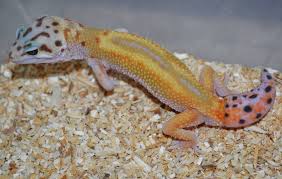
If your leopard gecko’s tail has suddenly become skinny, it could be due to several factors:
- Weight Loss:
- Inadequate Nutrition: A sudden decrease in appetite or inadequate nutrition can lead to weight loss. If your gecko isn’t eating enough, it may begin to lose fat stored in its tail, which can cause it to appear skinny.
- Illness: Health issues such as parasites, infections, or metabolic disorders can lead to weight loss and a thinner tail.
- Stress:
- Environmental Stressors: Changes in the gecko’s environment, such as temperature fluctuations, loud noises, or overcrowding, can cause stress. Stress can affect eating habits and overall health, leading to a skinny tail.
- Handling: Excessive or improper handling can stress your gecko, impacting its appetite and health.
- Dehydration:
- Insufficient Water Intake: Dehydration can cause weight loss and may lead to a thinner appearance of the tail. Ensure your gecko has constant access to fresh water.
- Tail Rot or Injury:
- Injury: If the tail has been injured or is infected (tail rot), it may appear skinny as tissue breaks down. Look for signs of discoloration, swelling, or a foul smell, which could indicate infection.
- Wound Healing: If your gecko recently lost its tail, the remaining portion may appear thinner as it heals.
- Age:
- Growth Stage: Young geckos can experience rapid growth, and if they are not getting adequate nutrition during this stage, their tails may appear skinny in relation to their body size.
What to Do:
- Monitor Eating Habits: Keep track of your gecko’s eating habits. If it’s not eating, identify potential causes and try offering a variety of food options, including gut-loaded insects.
- Check Environment: Ensure the habitat is clean, stress-free, and maintains optimal temperature and humidity levels.
- Hydration: Ensure your gecko has access to fresh water and is staying hydrated.
- Look for Signs of Illness: Observe for any other signs of illness, such as lethargy, abnormal behavior, or changes in stool.
- Consult a Veterinarian: If you notice persistent changes in your gecko’s tail appearance or overall health, consult a veterinarian experienced with reptiles for a proper diagnosis and treatment plan.
By addressing these factors, you can help ensure your leopard gecko’s health and well-being.
What is the lifespan of a leopard gecko without a tail
The lifespan of a leopard gecko without a tail can still be quite normal, typically ranging from 15 to 20 years. While losing a tail may impact some aspects of their health and mobility, it does not significantly shorten their lifespan if they are provided with proper care, a healthy diet, and a suitable environment. Regular veterinary check-ups and a stress-free habitat are also important for maintaining their overall well-being.
Why is my geckos tail dying
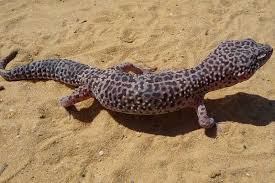
If your gecko’s tail is showing signs of dying (e.g., discoloration, softness, or a foul odor), it could be due to several reasons:
- Tail Rot:
- Infection: Bacterial infections can lead to tail rot, characterized by darkening or softening of the tail tissue. This can occur after an injury or if the tail is not kept clean.
- Poor Wound Care: If the gecko has recently lost its tail and the wound is not properly cared for, infection can set in, leading to necrosis of the tissue.
- Dehydration:
- Lack of Water: Insufficient hydration can affect the overall health of the gecko, causing the tail to lose its fat reserves and appear unhealthy. Dehydration can lead to tissue damage, making the tail more susceptible to infection.
- Nutritional Deficiencies:
- Poor Diet: A lack of essential nutrients, particularly calcium and vitamins, can weaken the tail tissue. If the gecko is not receiving a balanced diet, it may lead to deterioration of the tail.
- Stress:
- Environmental Factors: High stress levels from environmental changes, handling, or inadequate living conditions can negatively impact your gecko’s health, potentially leading to issues with the tail.
- Previous Injury:
- Trauma: If the tail was previously injured, the damaged tissue may be prone to infection and necrosis, causing it to appear unhealthy.
What to Do:
- Inspect the Tail: Look for signs of infection, such as redness, swelling, or discharge, and assess the overall condition of the tail.
- Improve Care Conditions: Ensure the habitat is clean, properly temperature-regulated, and stress-free. Provide a balanced diet and fresh water.
- Consult a Veterinarian: If you notice severe signs of tail dying or infection, seek veterinary advice. An experienced reptile veterinarian can provide diagnosis and treatment options, which may include antibiotics or other medical interventions.
Taking prompt action can help prevent further deterioration and support your gecko’s health.
Conclusion
Leopard Gecko Tail Regrowth is a fascinating natural process that allows these reptiles to recover from tail loss.
While the new tail may differ in appearance and texture from the original, understanding the factors influencing regrowth, such as stress and nutrition, is crucial for the health and well-being of your gecko.
